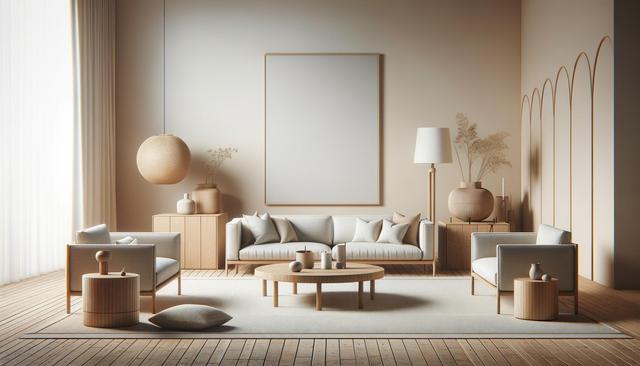Multifunctional Furniture for Modern Living
In today’s homes, space is often at a premium, making multifunctional furniture a practical and stylish solution. Pieces that serve more than one purpose not only save room but also enhance the overall flow of a space. Whether you live in a compact apartment or a spacious home, integrating furniture with dual functions can redefine how you use your environment.
Popular multifunctional furniture includes items like:
- Sofas that convert into beds
- Ottomans with hidden storage
- Coffee tables that transform into workstations
- Wall-mounted desks that fold away when not in use
These pieces are ideal for those who value a clutter-free aesthetic without sacrificing usability. Functionality doesn’t mean compromising on design, either. Many of these items are available in contemporary finishes and materials that complement a range of interior styles, from minimalist to eclectic. As more people seek flexible living arrangements, multifunctional furniture continues to grow in popularity for its smart use of space and seamless integration into modern interiors.
Natural Materials and Earthy Tones
One of the most noticeable furniture trends is a shift toward natural materials and earthy tones. This movement reflects a broader desire for sustainability and a connection to nature. Materials like wood, rattan, bamboo, and linen are making a strong comeback, offering both texture and warmth to any room.
Earth-inspired color palettes such as muted greens, terracotta, soft browns, and creams are also in demand. These tones create a calming atmosphere and pair well with both traditional and modern furniture pieces. Incorporating natural elements into interior design can have a grounding effect, helping to create spaces that feel relaxed and inviting.
To incorporate this trend effectively:
- Choose solid wood furniture with visible grain patterns
- Opt for upholstered pieces in neutral or earthy fabrics
- Mix and match textures like leather, wool, or jute for added depth
- Use indoor plants as complementary decor
This trend not only enhances visual appeal but also supports a more eco-conscious lifestyle when sustainable materials and manufacturing practices are prioritized.
Curved Silhouettes and Soft Edges
Sharp corners and rigid lines are taking a backseat as curved silhouettes emerge as a leading design preference. This trend is all about softness, comfort, and visual harmony. Furniture with rounded edges, arched forms, and organic shapes introduces a sense of flow and ease to a room.
Curved furniture can be found in a variety of pieces, including:
- Sofas with rounded backs and arms
- Oval or circular coffee tables
- Bar stools with gently curved seats
- Accent chairs with smooth, flowing lines
These forms are not just aesthetically pleasing—they also promote a sense of safety and comfort by eliminating harsh angles. In open-plan spaces, curved furniture helps define zones without breaking the visual continuity. Designers are increasingly using these shapes to add a touch of elegance and sophistication while maintaining a welcoming ambiance.
Vintage Revival and Retro Accents
Another trend reshaping interiors is the revival of vintage and retro furniture styles. Mid-century modern pieces, in particular, have seen a resurgence, offering timeless appeal and functional design. This renewed interest in past styles is driven by a desire for unique, character-rich furnishings that tell a story.
Vintage-inspired furniture often features:
- Tapered wooden legs
- Bold color choices like mustard yellow or teal
- Geometric patterns and textures
- Compact, practical designs
Blending old with new is key to mastering this trend. A vintage armchair can sit beautifully beside a modern sectional, or a retro sideboard can be repurposed as a media console. The trick is to balance nostalgia with functionality, using vintage elements to add charm and depth without overwhelming the space. This approach allows for personal expression while preserving practicality.
Minimalism Meets Personalization
Minimalism continues to influence furniture trends, but it’s evolving to include more personal touches. Rather than stark, impersonal spaces, today’s minimalist interiors aim for simplicity with warmth and individuality. Furniture choices are streamlined yet expressive, focusing on clean lines and high-quality materials.
To embrace this trend, consider:
- Choosing fewer but more meaningful pieces
- Opting for neutral tones accented by one or two bold colors
- Incorporating custom or handcrafted items
- Highlighting a statement piece, such as a sculptural chair or unique bookshelf
Personalization can be achieved through furniture that reflects your lifestyle and preferences, such as modular seating that adapts to your needs or open shelving that displays your favorite books and objects. This blend of minimalism and individuality creates spaces that are not only beautiful but also deeply connected to those who live in them.
Conclusion
Furniture trends today are all about enhancing how we live, not just how our spaces look. From multifunctional designs and natural materials to vintage revivals and personalized minimalism, the focus is on blending style, comfort, and practicality. These trends offer diverse ways to create interiors that are both functional and expressive. Whether you’re redecorating a single room or rethinking your entire home, choosing furniture that aligns with these evolving preferences can make a meaningful difference in how your space feels and functions.




Leave a Reply